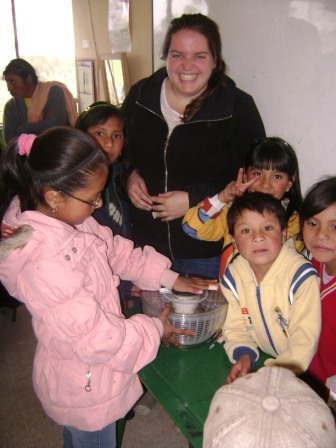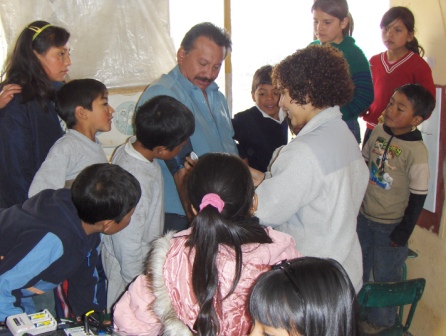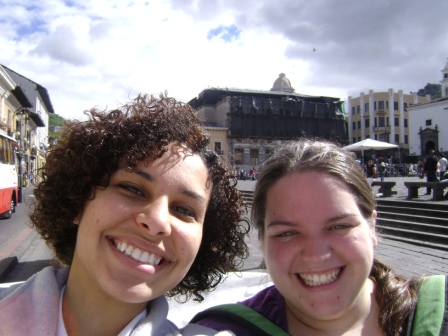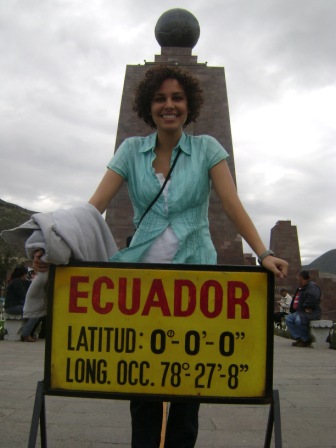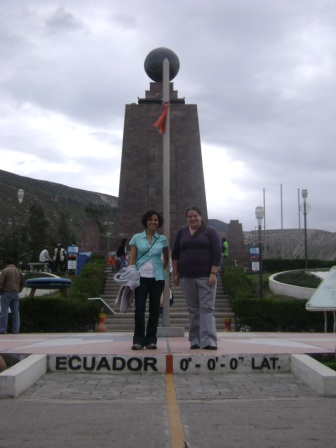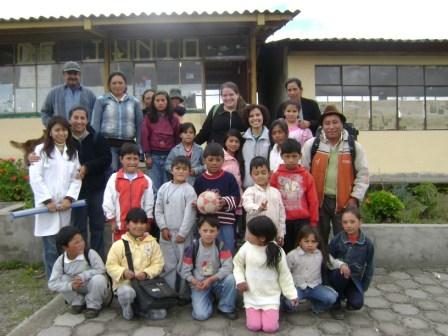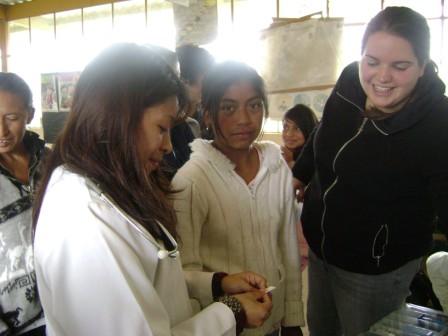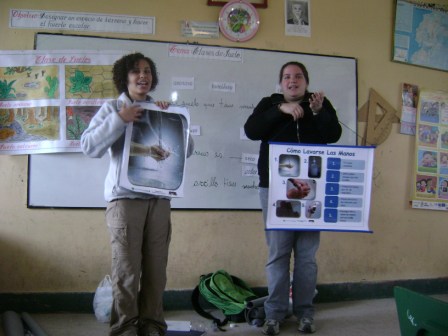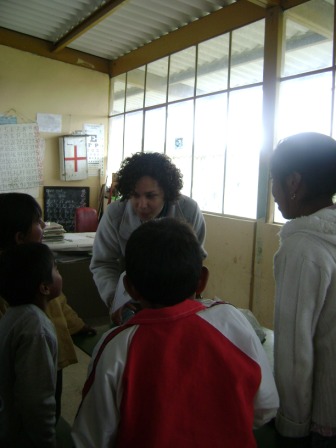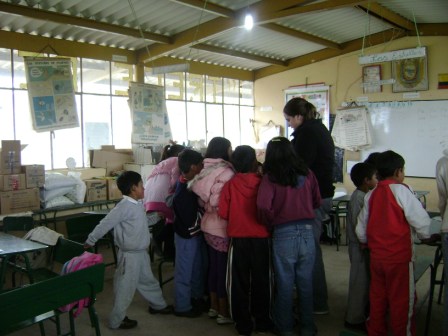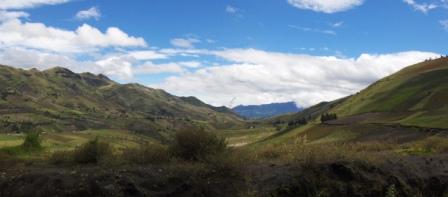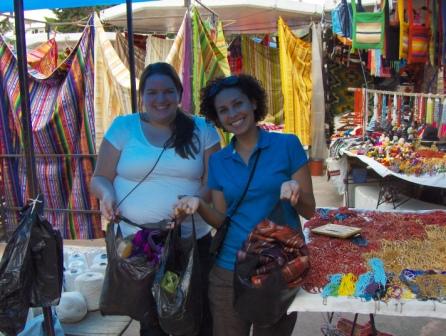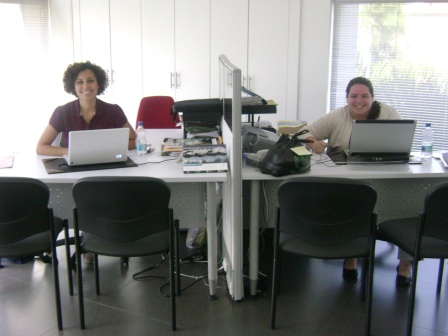Backpack Progress
Throughout our visits to Yatzaputzan and Planchaloma, we have made slow but steady progress on developing both the Community Health Outreach and OB/GYN backpacks.
CHO Pack
We quickly learned that the CHO pack, originally designed for community outreach workers in Malawi, would be used by the promotores de salud at Fundación Futuro’s health centers in Ecuador. We have talked extensively with Marta from Planchaloma and Angel and Evita from Yatzaputzan about ways to improve the backpacks, and have learned that while they have the medical training to use all the supplies currently provided, their focus is more on health education in the communities surrounding the clinic. As such, we have designed a series of educational flipbooks (hygiene, oral health, nutrition, family planning, vaccinations and recycling) to put in the backpack that they can use with individual patients or during larger brigades. We’ve also included a dry erase board and markers that they can use to improvise additional lessons. They also requested additional medical supplies, including an adult scale, masks, suture kits, a WHO Colour Scale, a sharps container and a pediatric blood pressure cuff, some of which we have been able to find in Quito. We also need to find new containers for urine samples, since they only use sterile cups here. We hope that once we finalize these changes we will be able to take the CHO pack on another brigade to assess the impact of these improvements.
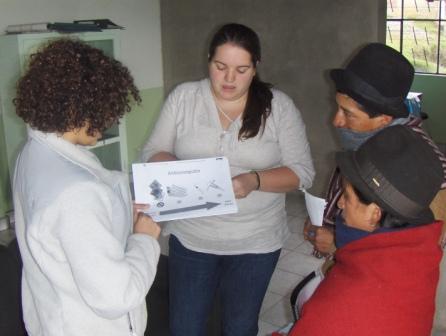
Reviewing our new educational materials with Angel and Evita before printing the final copies.
OB/GYN Pack
This issue of sterility has posed several major challenges for the implementation of the OB/GYN backpack. Patients here will not use speculums that have been used on other women, even if they’ve been properly sterilized. Instead, they use disposable speculums. Furthermore, the obstetricians use individually-packaged spatulas and brushes in order to keep them sterile, whereas those in the backpack are contained in one large bag. Until these changes are made, we are unable to use the backpack in the field. In the meantime, we have translated the backpack’s educational materials into Spanish, and have discussed the frequency of use of each of the backpack’s procedures. While pap smears and birth control counseling are common, the doctors at the clinic do not perform biopsies, but rather refer patients to a larger hospital.
We are eager to finalize these modifications so that we can bring the new and improved versions into the field for use with patients.

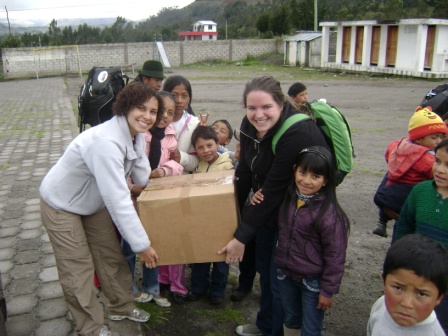 Wednesday marked our first day back in Planchaloma and another medical brigade to Yugsiche Alto. This time we were accompanied by Maria Alicia, Monica, a gynecologist at the clinic, and Don Juan, another health promoter from Planchaloma. When our truck pulled up to the school, we were greeted by a mass of smiling kids running up to greet and hug us. They even remembered our names! Once we got them to settle down a bit, Maria Alicia reviewed with the kids and parents what Lila and I had taught them the last week about hand hygiene and recycling. And they did very well on their little quiz! They remembered the important points that we covered the in our lesson week before. This is great news for Lila and me: our ‘charlitas’ with the kids are a success! The kids are actually learning and retaining the knowledge that we give them. Now, we just hope that they are using it as well.
Wednesday marked our first day back in Planchaloma and another medical brigade to Yugsiche Alto. This time we were accompanied by Maria Alicia, Monica, a gynecologist at the clinic, and Don Juan, another health promoter from Planchaloma. When our truck pulled up to the school, we were greeted by a mass of smiling kids running up to greet and hug us. They even remembered our names! Once we got them to settle down a bit, Maria Alicia reviewed with the kids and parents what Lila and I had taught them the last week about hand hygiene and recycling. And they did very well on their little quiz! They remembered the important points that we covered the in our lesson week before. This is great news for Lila and me: our ‘charlitas’ with the kids are a success! The kids are actually learning and retaining the knowledge that we give them. Now, we just hope that they are using it as well. During the brigade, the doctors from the clinic, including Lorena and Monica, took every child’s height and weight. Sandra, a health promoter in training, sat behind a small table and gave the kids bottles of multivitamins. Monica also gave all of the kids de-parasiting pills, which essentially will detox them of all the parasites that linger in their bodies and could potentially cause them extreme harm. Lila showed the ever-curious kids all of the devices in the backpack and how they worked. She also took care of various cuts, scrapes, and burns that the kids complained to her about by using the First Aid items in the CHO pack. After the wounds were taken care of, the kids found serious interest in Sally, which she demonstrated to them and let them take turns pushing the button for the allotted 10 minutes. I had most, if not all, of the adults ask me to take their blood pressure and glucose, a few of them telling me they were concerned about their health because of diabetes. I used the glucometer, test strips and antiseptic wipes from the Lab-in-a-Backpack to test their blood glucose levels and also used the blood pressure cuff from this backpack. There were no more lancets in the Lab-in-a-Backpack, so I used the ones from the CHO pack. I tested over 25 people and of these, one woman had a glucose level of 319. This is extremely high, given that normal is between 80 and 120. When I told her this, she said she knew that she has diabetes and has painful headaches all of the time. I asked her if she had medicine for this or if she had even been to the clinic to see a doctor about her condition. She responded no because she didn’t know that they could help her or give her medicine.
During the brigade, the doctors from the clinic, including Lorena and Monica, took every child’s height and weight. Sandra, a health promoter in training, sat behind a small table and gave the kids bottles of multivitamins. Monica also gave all of the kids de-parasiting pills, which essentially will detox them of all the parasites that linger in their bodies and could potentially cause them extreme harm. Lila showed the ever-curious kids all of the devices in the backpack and how they worked. She also took care of various cuts, scrapes, and burns that the kids complained to her about by using the First Aid items in the CHO pack. After the wounds were taken care of, the kids found serious interest in Sally, which she demonstrated to them and let them take turns pushing the button for the allotted 10 minutes. I had most, if not all, of the adults ask me to take their blood pressure and glucose, a few of them telling me they were concerned about their health because of diabetes. I used the glucometer, test strips and antiseptic wipes from the Lab-in-a-Backpack to test their blood glucose levels and also used the blood pressure cuff from this backpack. There were no more lancets in the Lab-in-a-Backpack, so I used the ones from the CHO pack. I tested over 25 people and of these, one woman had a glucose level of 319. This is extremely high, given that normal is between 80 and 120. When I told her this, she said she knew that she has diabetes and has painful headaches all of the time. I asked her if she had medicine for this or if she had even been to the clinic to see a doctor about her condition. She responded no because she didn’t know that they could help her or give her medicine. 